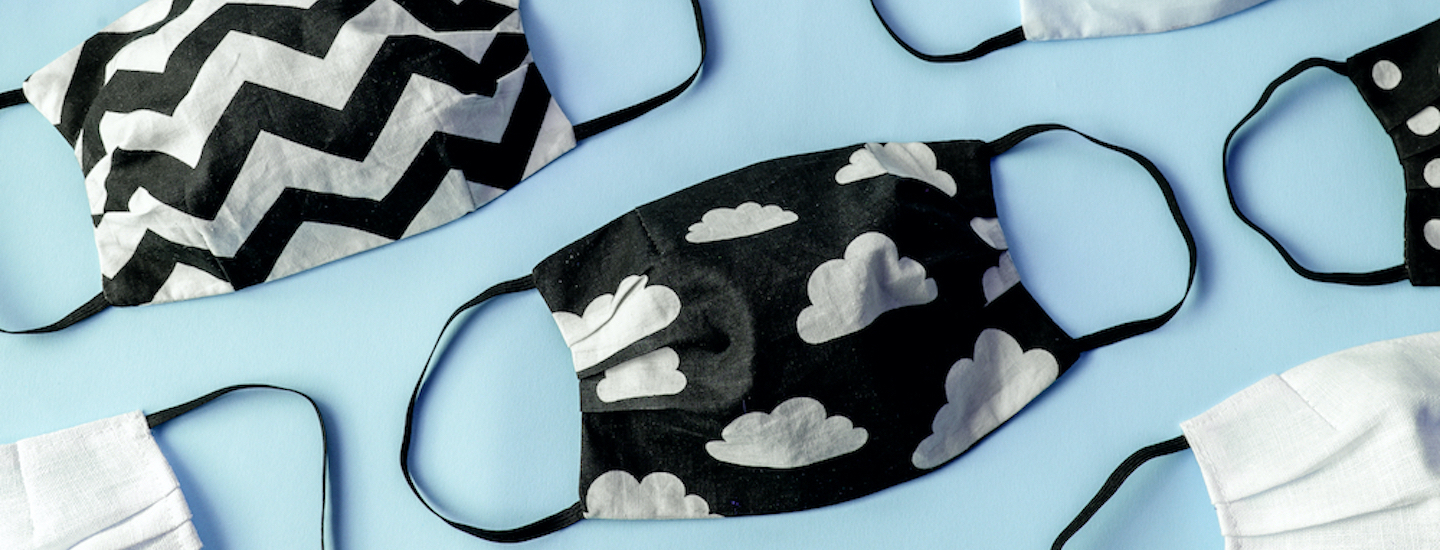
In the era of COVID-19, we all have to take extra precautions to protect ourselves from the novel coronavirus. This includes social distancing, proper sanitization of surfaces and necessary use of personal protective equipment (PPE) such as masks and gloves. Not surprisingly, there has been a dramatic increase in the use of single-use PPE. Unfortunately, they’re ending up on our beaches and in our waterways. These items are generally made from plastic and therefore present immediate health risks for wildlife and will eventually turn into microplastics which get into our food, water, and air. The lasting impacts of using single-use PPE will remain long after we’re gone. While proper disposal of PPE is important, large-scale reliance on single-use items simply isn’t a sustainable solution. For example, if you used a new single-use mask each day since masks were mandated (roughly 6 months ago) that would result in over 150 single-use masks!
In celebration of the International Coastal Cleanup, Surfrider is releasing a series of graphics to advocate for the responsible use of reusable PPE. By choosing reusable, safely sanitizing, and assisting with cleanup efforts, we can effectively protect ourselves from the current pandemic without worsening the plastic pollution crisis.
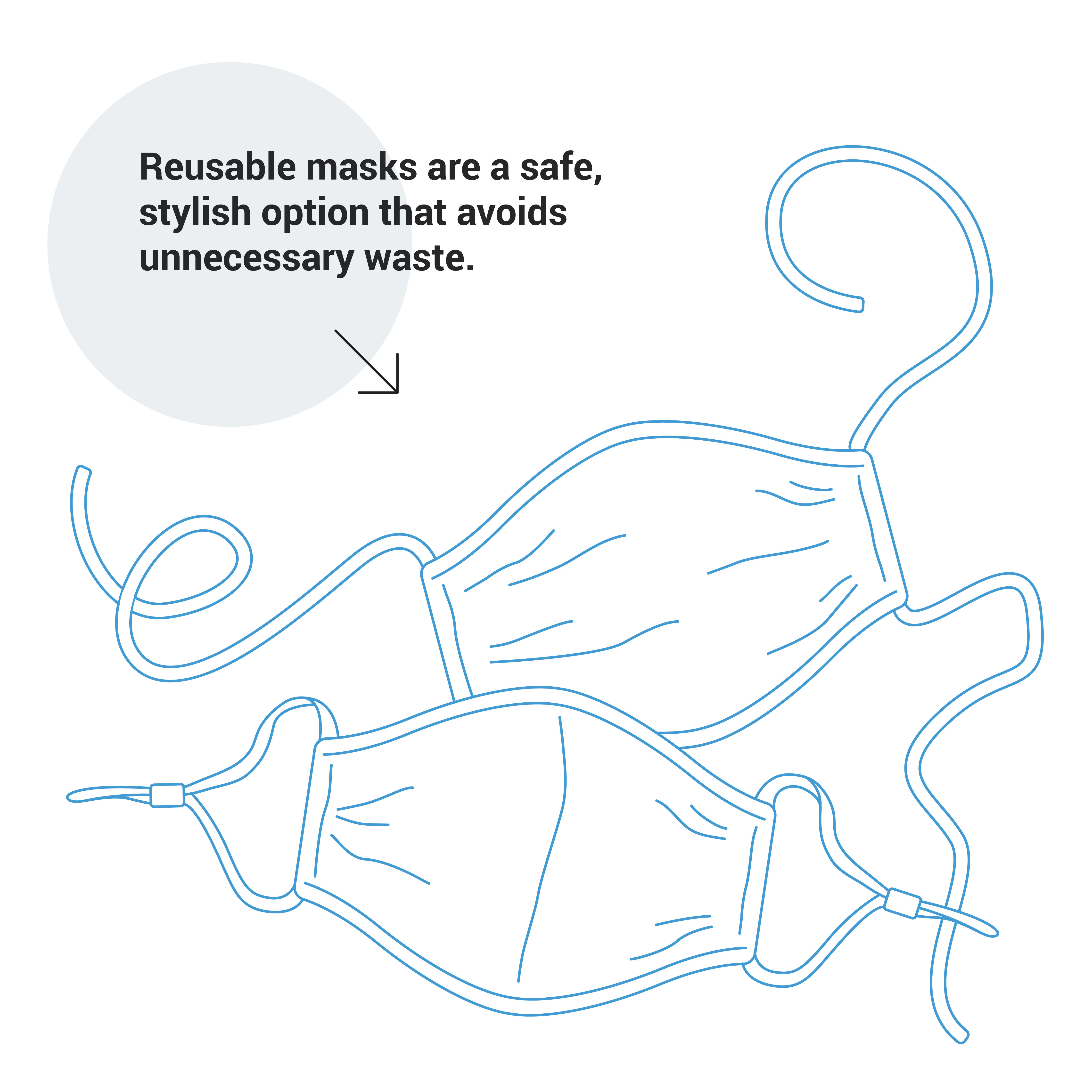
Choose Reusable Masks
Single-use surgical masks and masks with respirators are not recyclable, meaning they will either end up in a landfill or littered. Seeing as face masks are an effective tool in reducing the spread of COVID-19, the best way to reduce your waste and protect yourself is with a cloth mask. Some considerations to keep in mind with cloth masks:
- Stick to natural materials, such as cotton or silk.
- The more layers of fabric = the better effectiveness of the mask.
- Make sure your mask fits properly around your nose and mouth.
A reusable mask is a great option for running errands or when social distancing is hard to comply with. Read these tutorials from the Centers for Disease Control to make your own reusable mask or check with local vendors in your area to see who is selling cloth masks. Whether your crafting skills are top notch or not, you are sure to find a reusable mask that fits your personal style and needs.
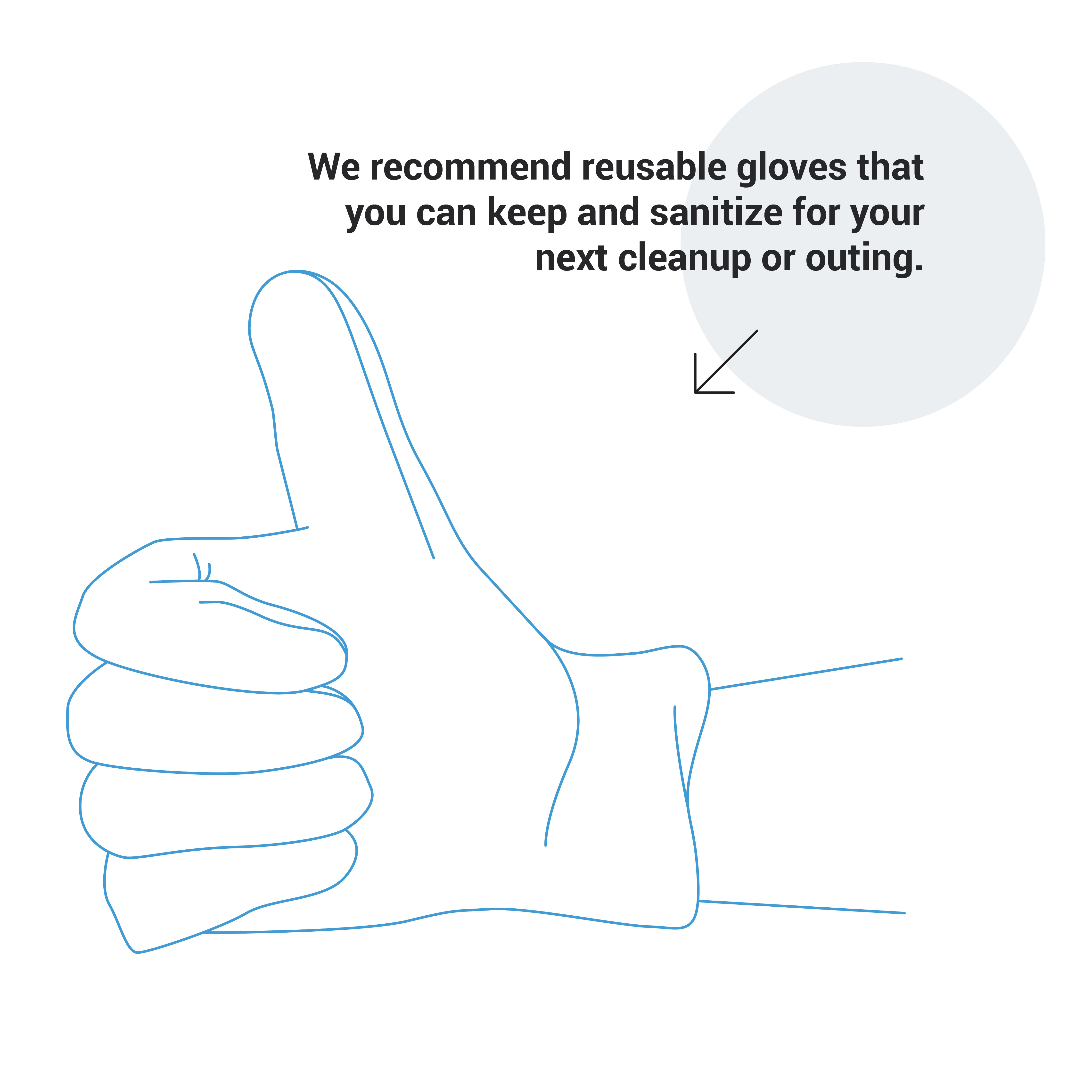
Skip Single-Use Gloves, Go Reusable
The CDC states that, “for the general public, wearing gloves is not necessary in most situations, like running errands.” Additionally, most single-use gloves are difficult to recycle, even when disposed of in specialty bins. While there are certain programs that exist, they are predominantly used in laboratories and abide by a strict set of rules. Although gloves are recommended in certain instances, you can skip single-use gloves most of the time and simply wash your hands.
Should you find yourself in need of gloves, such as during a solo cleanup, Surfrider recommends using reusable gloves. Follow the below guidelines to keep your reusable gloves properly sanitized and ditch single-use gloves for good.
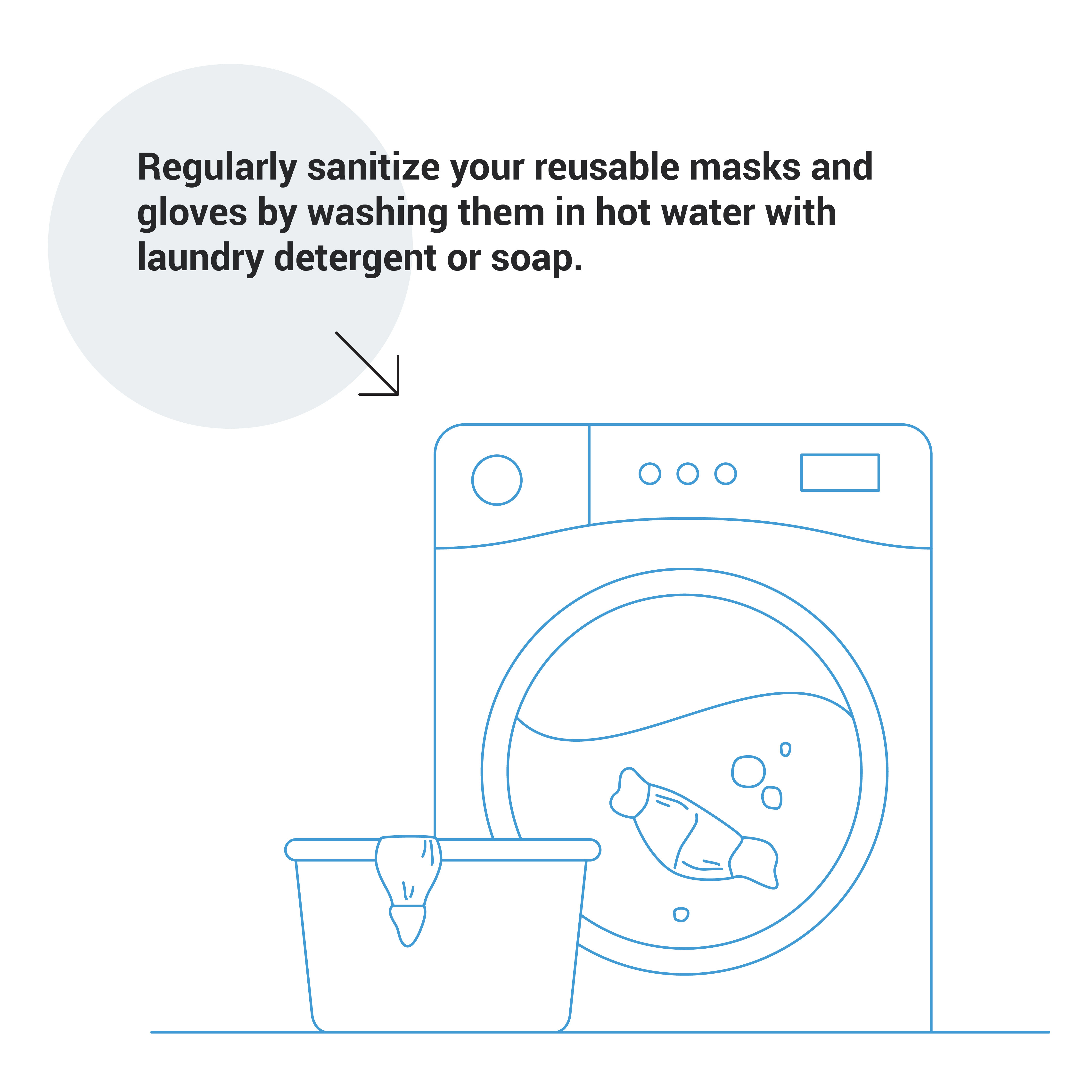
Sanitize Safely
Congratulations! You’ve decided to officially swap out single-use PPE for reusables. To continue using them safely, you need to properly sanitize your reusable masks and gloves. The CDC has outlined some recommended ways to sanitize reusables:
Washing
- Include your reusables with your regular laundry. Wash with warm water and detergent.
- Boil in a pot with water for 5 minutes. Make sure the water is boiling and exercise caution.
- Hand wash with soap and hot water.
- Prepare a bleach solution and soak your mask for 5 minutes. Make sure to follow all safety precautions when using bleach.
Drying
- Use your clothes dryer on high heat until fully dry.
- Lay on a flat surface until fully dry. Try to put it in direct sunlight whenever possible.
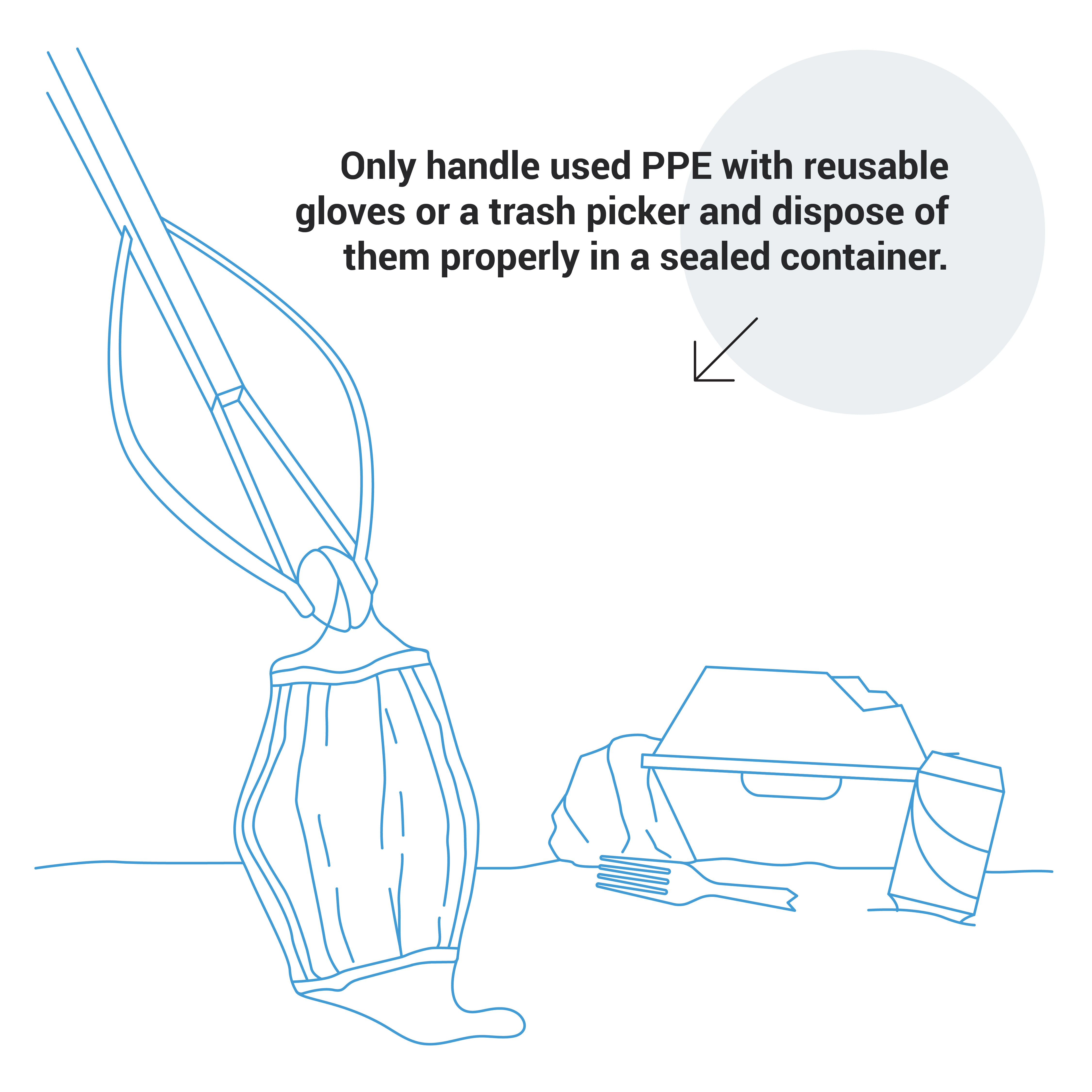
Use Caution When Cleaning the Beach
Cleaning our beaches and collecting data is more important now than ever before! However, used PPE like gloves, masks, and wipes found on the beach or in the water can be dangerous. Only handle these items with reusable gloves or a trash picker and dispose of them properly in a sealed bag or container. Check out Surfrider’s Solo Cleanup Guidelines for important safety guidelines.
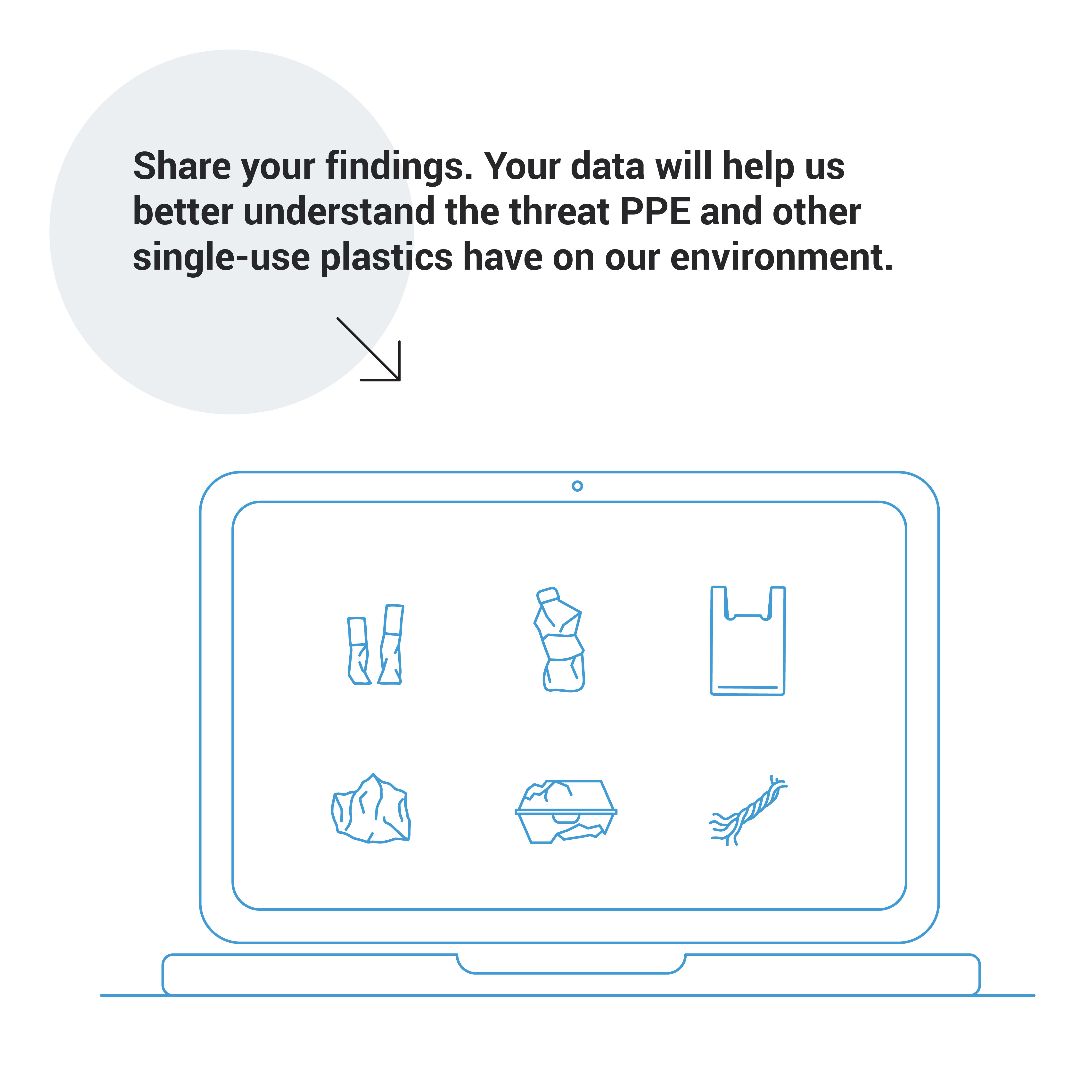
Share your Findings
Now that you’re armed with the proper knowledge about PPE, it’s time to flex those citizen scientist muscles! Help Surfrider capture valuable data by visiting cleanups.surfrider.org, downloading our beach cleanup data card, and registering for an account to input your findings. Your data will help us better understand the threat PPE and other single-use plastics have on our environment while contributing to policies aimed at reducing pollution at the source. Share your photos of PPE pollution using #SoloBeachCleanup and #SurfriderICC.
During the COVID-19 pandemic, we must all take precautionary steps to reduce risking the spread of the virus while keeping in mind that increased usage of single-use PPE will only fuel the larger plastic pollution issue. Make the switch to reusables, clean them properly and share your solo beach cleanup findings to reduce both your personal risk and the negative environmental footprint of COVID-19. The more data we collect, the better we can understand the environmental impact of PPE, and the easier it will be to advocate for solutions. Join us by conducting a solo cleanup today!
